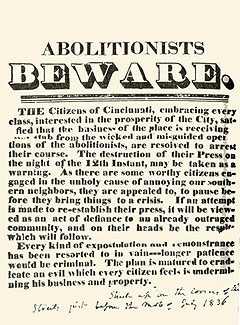Rafferty ENGL227 Project
ekrafferty
81
Slavery shaped man aspects of American culture. Not only did it help create a booming economy for a beginning nation, but it also created a culture of its own within that of the American culture. Through songs, stories, writings and poetry, written by both slaves and white Americans, slaves were able to express their feelings. My Collex project will show resources that show examples of this subculture.
|
Po' Sandy, written by Charles Chestnut, who was African American, tells the story of a Julius McAdoo's, a slave, account of what happened to his friend, "Po' Sandy." He discusses the love and devotion of him and briefly discusses the account of physical abuse that had happened to him. This work shows how the sentiment of the northern states as well as the southern states. It shows how the south treated the slaves, but also how the northern states sympathized with them by listening to what they had to say and wanting to help. This pice would be good to use as an example of a piece of literature that was written by an African American about a northern family who listened to the accounts of a slave from the south.
|
|
On the Abolition of the African Slave-Trade, is a collection of poetry written by abolitionists on the suffering of slaves. The poems go into the pain of the slaves on a daily basis, as well as the pain a slave mother goes through in having to see her child be forced into slavery. I would use this collection in a research paper to discuss how northern states showed their sympathy for slaves through poetry. This collection is a prime example of the subculture created by slavery in that it is a collection of poetry written by a subculture that was fighting for freedom for the slaves.
|
|
This article, found from the Library of Congress's online database, shows how the slave subculture also caused written laws telling them and their owners what to do. I would use these laws in a research paper to show how the slave subculture of those who were pro slavery also created written works about slavery. What makes these works different from those of the northern states' works, is that the northern states wrote more favorably for the slaves, while the southern pro-slavery subculture wrote about law and not as much romanticism about slavery.
|
|
The songs, A Slaves Dream and A Slaves Funeral, are prime examples of a first hand account of slave subculture. Composed by William C. Caroll, a slave, the songs show the slaves were pulled from their homes and culture overseas and brought to America to be slaves. They show that slaves, despite popular belief amongst southern proslavery states, have feelings and emotions. I would use these songs in a research paper to show how the emotions of slaves came out in works created by them and thus showed that they were indeed human.
|

Am I Not a Man and a Brother?
|
This image, found from the Library of Congress' online database that was originally published in the antislavery poem, "Our Countrymen in Chains," by John Greenleaf Whittier shows how art had played a role in the slave subculture. This image was undoubtedly created by an abolitionist, most likely from a northern state. I would use this image in a research paper about the slavery subculture to show how images also depicted the subculture. While there are images like this one that are antislavery, there just as many proslavery images, which I would also include in the paper.
|

Pro Slavery Riot
|
To the left is a prime image of the proslavery images seen around during the slave subculture time period. Not only did they aim to frighten slaves, but also to frighten abolitionists that they saw were threatening their way of life. I would use this image in a research paper to show the contradicting images of the anti and pro slavery movements.
|
In conclusion, there are many different forms of the slavery subculture that created an onslaught of new stances in writing during the time. Whether it be poetry, art, or written law, the slave subculture created many important pieces of history. The three sides of the subculture, being the proslavery, antislavery and slaves themselves, also created a riptide of emotions during the time that is clear in their writings and artworks.




